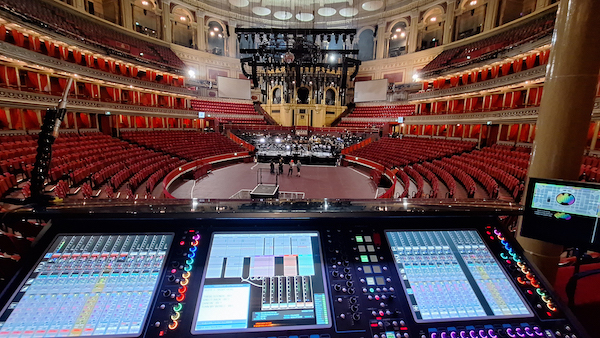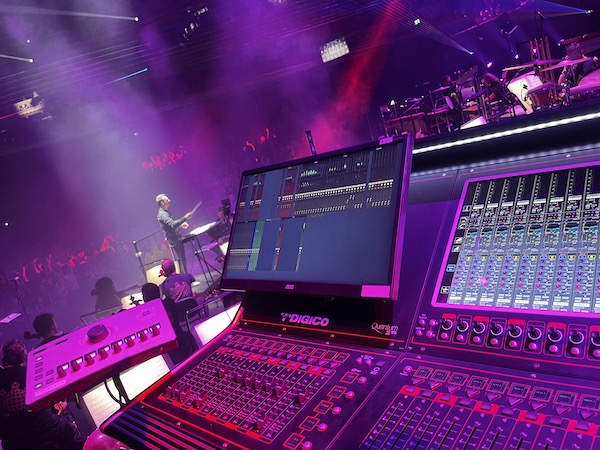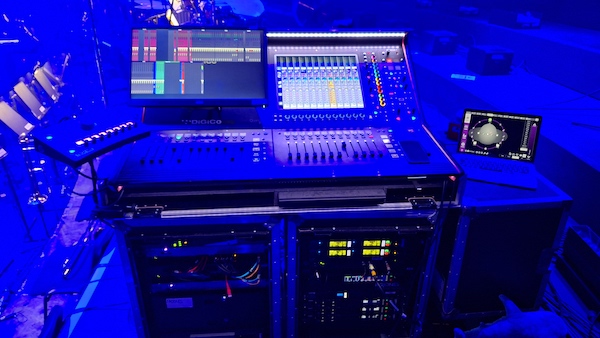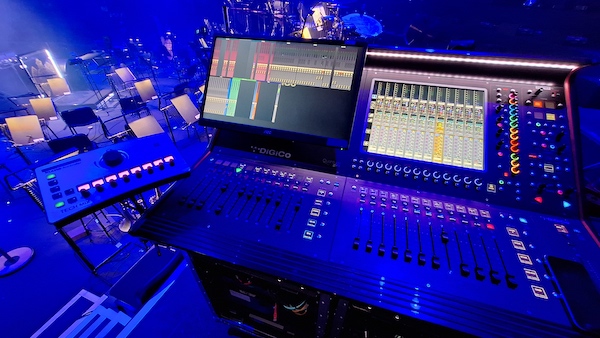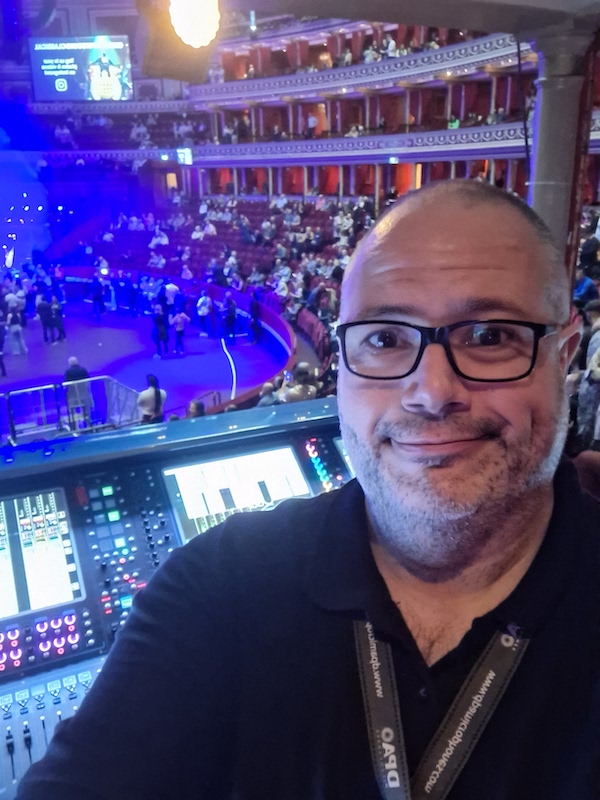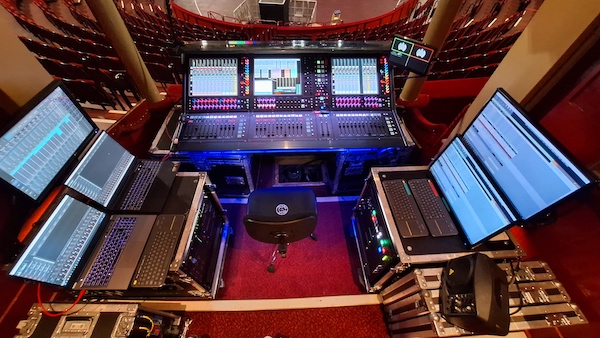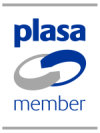On April 6th 2024, the Royal Albert Hall hosted Ministry of Sound Classical. This is an epic performance from beginning to end, with a set list inspired by the wildly popular Ministry of Sound Annual Volume II. Released in 1996, the album remains one of the biggest selling dance compilations ever made and is performed on stage by the 50-piece RG Live London Concert Orchestra with guest synth players and vocalists. Sound designer, Phil Wright, chose a DiGiCo Quantum 338 for the front of house position and a Quantum 225 for on stage monitoring due to their powerful processing and compact footprints.
“Audiences don’t realise that the songs they love are all sampled from classical orchestrations, so when they hear them played by a real orchestra they’re blown away,” Wright enthuses. “They really go crazy and that’s testament to the work of Tom Player, the creative lead behind bringing the orchestrations to the stage. This show is a true example of the whole being more than the sum of its parts. To make something like this happen, every single person involved has to be firing on all cylinders, and it shows that the whole team are giving it all the beans.”
This ideal extends to the equipment, too, with Wright opting for the lightweight Quantum 338 at the front of house position, a choice he could make thanks to the power of Nodal Processing. This feature allows each aux on the channel to be processed individually, without the need for duplicate channel creation. So, when single channels are sent to multiple outputs, they can be sent from one source but with completely different EQ, compression, or dynamics for each aux. For Wright and his team, this has meant their system has become much more manageable.
“We need very different EQ on all the different aux sends from our vocal channels for instance. What is going into the IEM of a player in the orchestra will be different to what the singer needs, or what is being heard by the audience,” he says. “With the SD12 I would have to create duplicate channels to EQ each output, but with Nodal Processing those duplicate channels disappear. This meant our monitor desk could effortlessly be accommodated by a Quantum 225 at the Albert Hall and with the new Pulse Updates. I’m looking forward to taking out a single Quantum 225 96 and just KLANG immersive in-ear monitoring for the summer shows, that’s going to be awesome.”
Manoeuvrability was a major part of the Quantum 338’s attraction for Wright, weighing in at 70kg, it is over 40kg lighter than the larger Quantum 7 series consoles but still packs a weighty punch in terms of onboard processing.
“Last year, we were using an SD12 with an SD11 at the monitor position,” he recalls. “This year, the extra guest artists have taken us well over our SD12 channel count. We’ve added a 10-piece choir, four extra brass players on RF for Rag and Bone Man, and all our guest singers, so we had to upgrade. The Q338 was totally the right call and a complete game-changer! People suggested we use the Quantum 7 or Quantum 8, but the Q338 has really worked and it’s easier to carry!”
The efficient workflow continues on stage, where monitoring is being managed by Leigh Davies. Davies has been with the show since the beginning and the Royal Albert Hall performance was an opportunity for him to be more involved in the monitor mix.
“The show is massive and not what you would usually expect to see at the Royal Albert Hall; the crowd are giving off a huge amount of energy,” Davies explains. “On stage we are using a Quantum 225 and a KLANG:vokal system. The joy of KLANG is that we can give the musicians much more space for their mix, which is really important for a show like this when there are so many elements to each song, and you want to stay connected to the audience. In a show where the click is so important to hold the players together, with KLANG I found moving it above the vocalist’s eye line means that we can make it prominent in their mix with space for everything else not compromised – it almost makes it subconscious for them. It’s about understanding how the mix can work for each person. It’s a completely different way of mixing audio, but one that’s really easy.”
RG Jones provided the DiGiCo desks, and the team couldn’t be happier with their relationship with the company and the staff. When a show is this big, having a system that works straight away is key to a stress-free performance, as Wright and Davies conclude.
“The team from RG Jones – Rosie Tarrant, Harry Honeywell and Vinay Rana – were instrumental in making sure the show went smoothly,” says Wright. “When a performance is this epic but the amount of time you’ve got is anything but, everyone has got to be at the top of their game. We’ve got a fantastic audio team and great support from RG Jones and DiGiCo, and the whole production is amazing, it definitely leaves an impression.”
“Having a system that just works is so important on a show like this and especially when you’ve got such a large amount of players inputs and content,” Davies adds. “The players have no idea why it’s so good, and they don’t care what’s making it rock solid. It just is, and that makes the night a real joy to be part of.”
